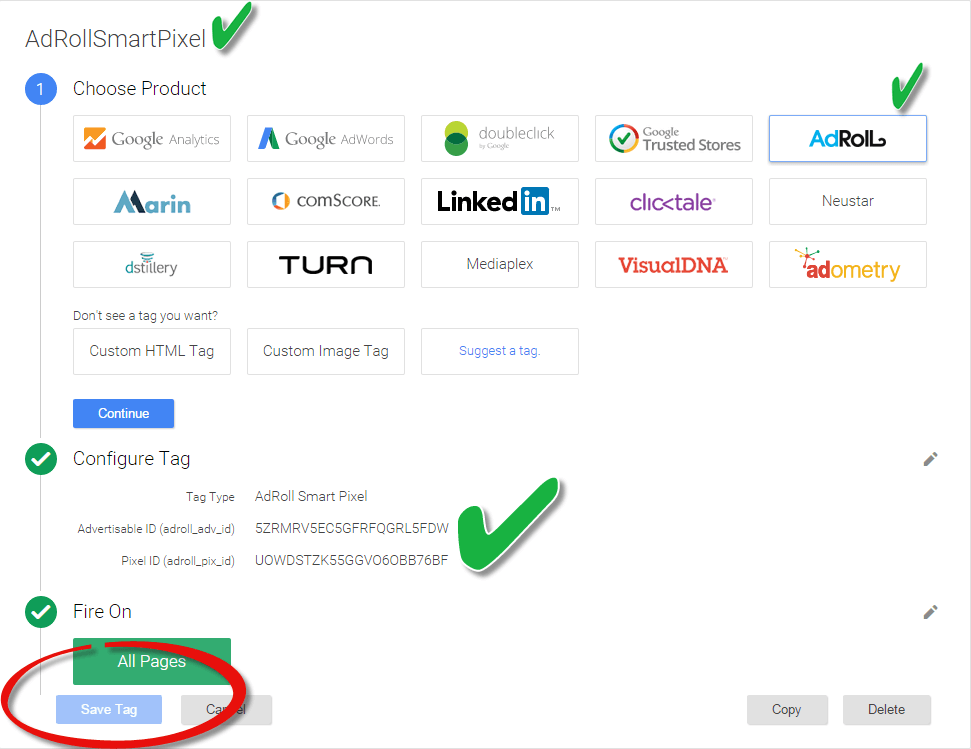

- #Adroll smart pixel google tag manager how to#
- #Adroll smart pixel google tag manager full#
- #Adroll smart pixel google tag manager code#
Accordingly, a best practice is to deploy any third-party pixel tags and associated audience segments as soon as possible.You are a Google Tag Manager user? Then you know how convenient it is to add or change tags as needed without bothering your colleagues from the IT department. However, as the deployment time of the third-party pixel tag and the audience segment approaches 30 days and the amount of available data increases, these features will approach their normal levels of accuracy. If you are putting Audience pixels onto a third-party website, it’s expected that forecasting results will initially be incomplete and inaccurate since the segment memberships are being collected on a website that’s outside of your network. To report on forecasting data as soon as a campaign starts, put the Audience pixels on your site or app at least 28 days before the campaign launches and be sure to create an audience segment that targets the ad unit called in the pixel tag. There is no cookie or mobile advertising ID pool size requirement to be able to generate a forecast.
#Adroll smart pixel google tag manager full#
Related topics Add a publisher provided identifier (PPID)Īs with any ad tag, Audience pixel tags take 28 days to collect enough data to generate a full inventory forecast.
#Adroll smart pixel google tag manager code#

Using a PPID allows you to have a consistent identifier across devices. It's possible to use a publisher provided identifier (PPID) for audience segmentation in place of a cookie or mobile advertising ID.
#Adroll smart pixel google tag manager how to#
Learn how to pass mobile ad IDs without the SDK Mobile advertising IDs will automatically be added only if the mobile app developer uses the Conversion Tracking SDK.Cookies will automatically be added to the segments that match the ad unit and key-values specific in the pixel tag.

However, there may be a difference in the way cookies and mobile advertising IDs (AdID or IDFA) are added: You can use the same pixel tag process to build first-party segments for both web and mobile apps. If you do need to collect users according to your inventory and an Audience pixel, you can create a third segment that includes the other two segments in the Behavior targeting. We recommend populating a segment either using your own inventory or with a pixel, but not both. Do not use Audience pixels to collect users also collected using your own inventory.


 0 kommentar(er)
0 kommentar(er)
